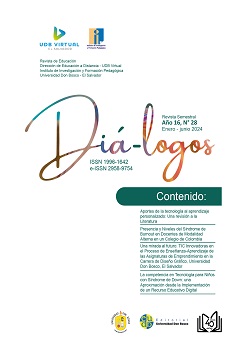La competencia en tecnología para niños con Síndrome de Down: Una aproximación desde la implementación de un recurso educativo digital
DOI:
https://doi.org/10.61604/dl.v16i28.357Palabras clave:
Competencía en tecnología, educación en tecnología, Síndrome de Down, recurso educativo digital, TICResumen
La educación en tecnología en la escuela básica permite al estudiante adquirir destrezas que le faciliten relacionarse con un entorno equipado de artefactos de uso diario; cuando un niño con discapacidad intelectual llega al aula regular por medio del programa de inclusión, la institución debe realizar las adaptaciones necesarias de acuerdo con las características individuales para que él pueda alcanzar el éxito en su proceso escolar. Dentro de este contexto un recurso educativo digital (RED), apoya el aprendizaje y el desarrollo de habilidades en esta población porque contiene elementos audiovisuales y facilita la repetición de la información. El presente artículo describe la contribución de un RED, en el desarrollo de la competencia en tecnología para dos niños con síndrome de Down (SD), que cursan segundo grado de primaria en un colegio oficial de Bogotá, Colombia; mediante una investigación de enfoque cualitativo, exploratorio, a través del estudio de caso. Los resultados indican que los niños SD desarrollan la habilidad para reconocer y utilizar de forma apropiada, los aparatos tecnológicos que encuentran en su ambiente cotidiano, con el RED, donde intervienen aspectos como el aprendizaje, comunicación, memoria, motivación, interacción, autonomía y seguridad.
Descargas
4627

